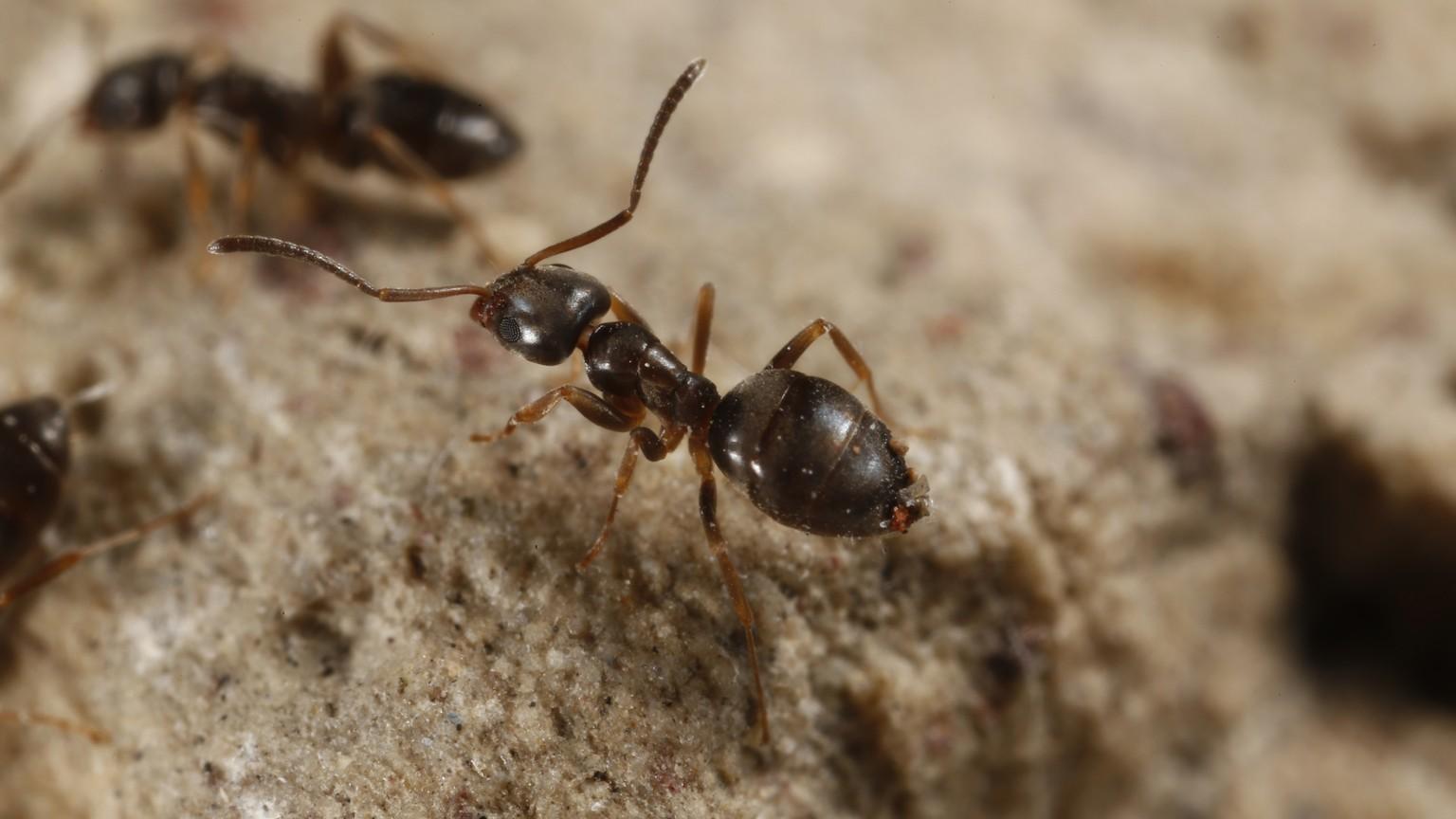Common ants found in homes
-
Carpenter ants, pharaoh ants, odorous house ants, acrobat ants, field ants, and pavement ants are some common ants that enter homes.
-
Carpenter ants can cause structural damage by tunneling into wood to nest and lay eggs.
-
Pharaoh ants can be difficult to control. Colonies are very large. Colonies can 'break apart' and establish subcolonies if they become stressed from applying repellent liquid or dust insecticides. Use bait-type traps to control them (refer to Baits below).
-
If ant problems persist, they may be pharaoh ants. Have them identified to be sure so that proper control measures can be taken.
-
Most other ants wander in the house in search of food and become a nuisance. They also enter homes if outdoor conditions are too wet or dry.
-
Flying ants (alates) develop when ant colony is ready to expand. Their purpose is to reproduce.
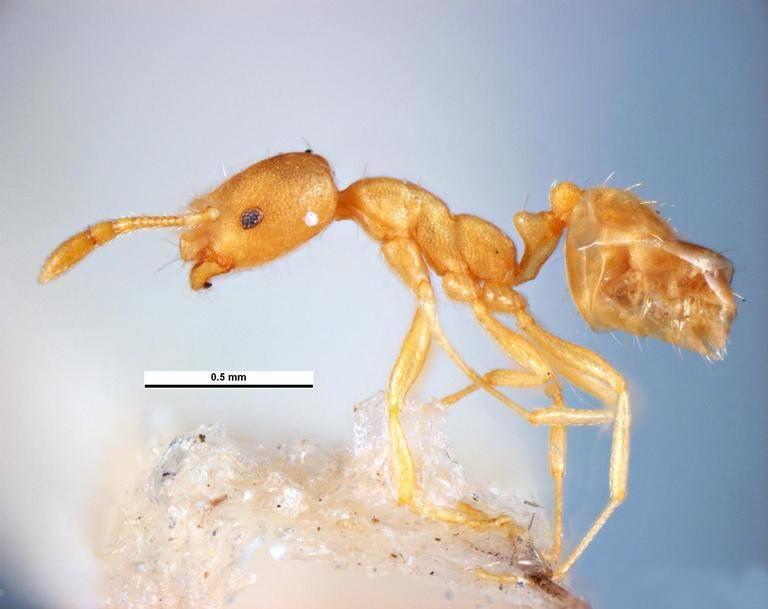
Pharaoh ant
Photo: Pest and Diseases Image Library, Bugwood.org
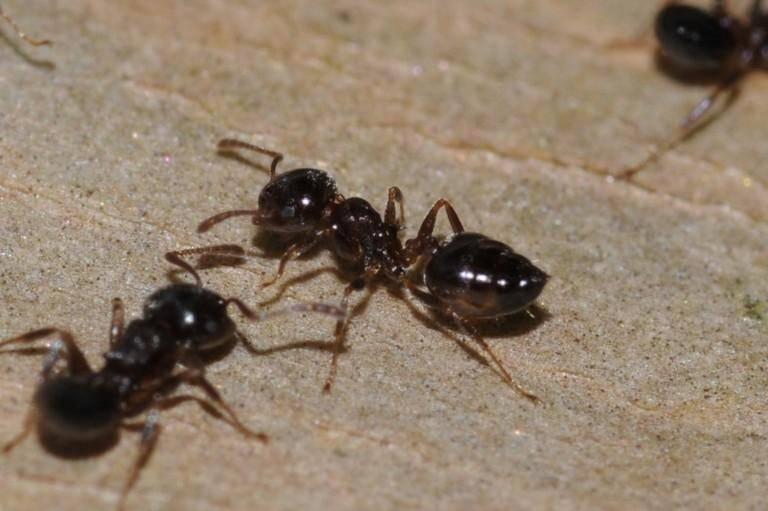
Acrobat ants
Photo: Ed Freytag, City of New Orleans, Bugwood.org
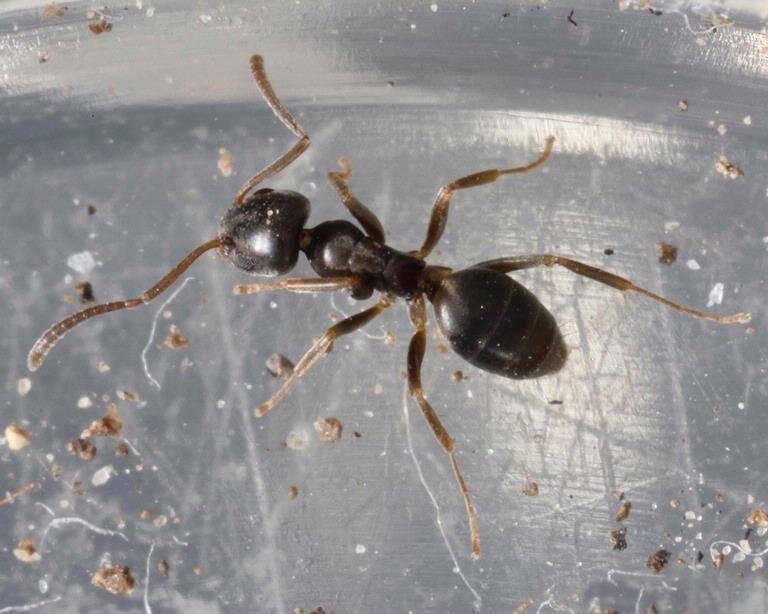
Odorous house ant
Photo: Joseph Berger, Bugwood.org
Description
-
Ants have three body regions: head, thorax, and abdomen. The abdomen is divided into the petiole and the gaster. They have elbowed antennae, and the gaster is attached to the thorax by a narrow waist that consists of one or two small segments.
-
Termites, on the other hand, have straight antennae and do not have a pinched waist.
-
There are three distinct castes of ants: queen, male, and worker.
-
There may also be different forms of each caste. Ants always live in societies known as colonies.
-
Workers are wingless, but at mating time swarms of males and females are produced, usually winged.
Life cycle
-
Adult winged males and females emerge from their cocoons and eventually leave the nests.
-
The emergence of large numbers of ants (swarming) usually occurs at certain times, and often this is the only time we notice them.
-
Males seek out females in the swarm; mating usually occurs in the air. Males die soon after the mating flight, while the female seeks out a crevice or similar hiding place. She then removes her wings, forms a small cell, and lays a few eggs.
-
The eggs hatch into tiny, white, legless grubs.
-
The queen feeds these grubs, or larvae, with a nutritious fluid that forms in her digestive system. When the grubs are fully-grown, they change into a nonfeeding pupal stage from which emerge the common “worker” ants.
-
These workers begin to forage for food, some of which is fed to the queen and some to the new larvae from the next lot of eggs.
-
Adult workers may live for weeks, or up to two years or more.
-
Queens have been known to live for as long as 20 years.
-
After the colony is well established, some of the larvae will develop into males and females, which will take off in the mating flight.
Management in the home
-
Ants are frequently attracted from outdoor colonies by food odors but if no food is found they will leave.
-
Store food in tight containers or refrigerate it. Rinse all food containers thoroughly before tossing them into the trash or recycling bin.
-
Ants often search for sweets or grease as food. They also feed on meats, dairy products, pastries, fruits, animal fats, and vegetable oils, as well as on dead or live insects.
-
If ants are found indoors, thoroughly clean areas where ants occur or gather. Search for the routes of entry and seal off with caulking compound.
Baits
-
Look for ants baits that have low toxicity such as boric acid and a sweetener. If not effective, try a gel based ant bait. Traps attract the ants to the poison without the need to apply insecticides in the home. Make sure you have enough traps to control the ants. Larger ants will require more traps than smaller ants. Carpenter ants may require twice the number of traps as small house ants.
-
Ants are attracted to different baits at various times of their lifecycle. Sometimes they are attracted to sugars and sometimes proteins.
-
Traps will take from 24 to 48 hours or even longer to work, so be patient. If used correctly, most ants will be controlled without having to apply any insecticides in the home.
-
The bait is taken back to the nest and distributed to the occupants.
-
Don’t clean up around the traps when using ant baits because it will actually keep the ants from going into them or feeding on the bait.
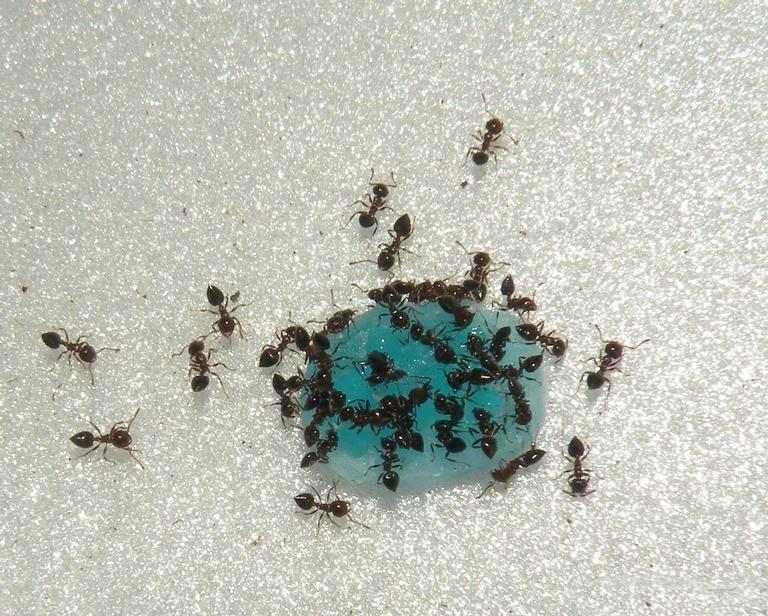
Acrobat ants feeding on ant gel bait. Photo: Jessica Louque, Smithers Viscient, Bugwood.org
-
If however, after baiting, the ants continue to be a problem, try to locate the ants’ nests.
-
Ants have trails that they follow to and from the nest. Watch the ants as they come and go from food. This will help determine if the ants are inside, or coming in from outdoors, and is often helpful in locating the nest.
-
It is not always possible to determine the exact location of a nest, especially if they are between floors, in walls, behind baseboards, beneath cracked basement floors, in decaying or rotting wood (often near leaky pipes), or even in piles of papers.
-
Spot treatment of nests and/or foraging trails with an insecticide may be needed in some cases. Follow the manufacturers’ directions carefully when using any pesticide. Never use insecticides on food preparation surfaces or in areas where children or pets frequent.
Adapted from HGIC publication HG 7 Ants and Their Control, Author, Mary Kay Malinoski, Extension Specialist, Entomology (retired).
Rev. 2020
Illustration of ant redrawn from Mallis, A. 1990. Handbook of Pest Control. Cleveland, OH: Franzak & Foster Co. 1152pp.
